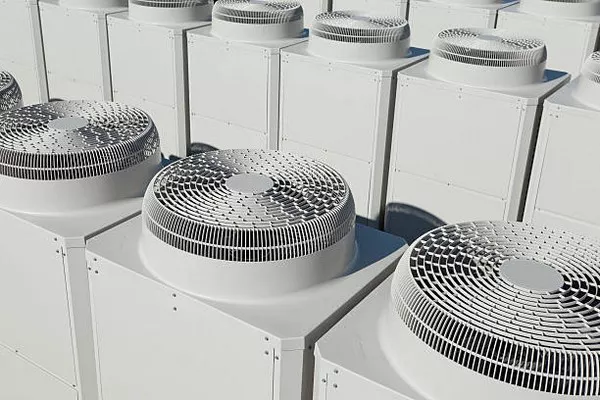Refrigeration systems have become an integral part of modern life, serving various industries and applications, from preserving food to maintaining the comfort of our homes and workplaces. At the heart of these systems lies a crucial component known as the compressor. The compressor is a mechanical workhorse that plays a pivotal role in the refrigeration cycle, enabling the cooling and preservation of perishable goods. In this article, we will delve into what a compressor is, its functions, types, and the vital role it plays in the world of refrigeration.
What is a Compressor?
A compressor is a mechanical device designed to increase the pressure and temperature of a gaseous refrigerant, ultimately converting it into a high-pressure gas. This process is essential in the refrigeration cycle, where the transfer of heat from one area to another is fundamental for cooling applications. Compressors serve as the heart of refrigeration systems by enabling the circulation of refrigerant, facilitating the absorption and release of heat, and maintaining the desired temperature within a controlled space.
Functions of a Compressor
Compression: The primary function of a compressor is to compress the low-pressure, low-temperature refrigerant vapor, making it highly pressurized and high-temperature gas. This compression process is critical for maintaining the refrigeration cycle’s efficiency.
Circulation: Compressors are responsible for circulating the refrigerant throughout the entire refrigeration system. This circulation allows the refrigerant to absorb heat from the environment (evaporator) and release it elsewhere (condenser).
Energy Transfer: By compressing the refrigerant, the compressor imparts energy to the gas, elevating its temperature and pressure. This high-energy state enables the refrigerant to perform heat exchange processes effectively.
Cooling: Compressors facilitate the cooling of spaces by removing heat from the desired area and releasing it outside. This process is vital in various applications, including air conditioning, food preservation, and industrial processes.
Types of Compressors
There are several types of compressors used in refrigeration systems, each with its own set of advantages and disadvantages. The choice of compressor type depends on factors such as the application, size, efficiency requirements, and cost considerations. Here are some common types of compressors:
Reciprocating Compressors:
Also known as piston compressors, these use a piston-cylinder arrangement to compress the refrigerant gas.
They are widely used in household refrigerators, air conditioning units, and smaller commercial applications.
Reciprocating compressors are cost-effective and offer good efficiency but can be noisy.
Rotary Compressors:
Rotary compressors utilize a rotating vane or scroll to compress the refrigerant gas.
They are compact and relatively quiet, making them suitable for residential and small-scale commercial applications.
Rotary compressors are energy-efficient and have a longer service life.
Screw Compressors:
Screw compressors use rotating screws to compress the refrigerant gas.
They are commonly found in medium to large-scale industrial refrigeration systems due to their high capacity and efficiency.
Screw compressors are durable and capable of handling heavy loads.
Centrifugal Compressors:
Centrifugal compressors use a high-speed impeller to increase the refrigerant’s pressure.
They are ideal for large-scale industrial and commercial applications, such as air conditioning in large buildings and industrial refrigeration.
Centrifugal compressors are known for their high capacity and energy efficiency.
Scroll Compressors:
Scroll compressors use two spiral-shaped scrolls to compress the refrigerant.
They are commonly used in residential and light commercial applications, such as heat pumps and small air conditioning units.
Scroll compressors are highly efficient and reliable.
The Role of Compressors in the Refrigeration Cycle
Understanding how compressors fit into the refrigeration cycle is crucial for appreciating their significance. The refrigeration cycle consists of four main components: the evaporator, compressor, condenser, and expansion valve. Here’s a brief overview of how the compressor contributes to the cycle:
Evaporation: In the evaporator, the low-pressure, low-temperature refrigerant absorbs heat from the surroundings, causing it to evaporate into a vapor form.
Compression: The vaporized refrigerant is then drawn into the compressor, where it undergoes compression, turning it into a high-pressure, high-temperature gas.
Condensation: The high-energy gas is directed to the condenser, where it releases heat to the external environment, causing it to condense back into a liquid state.
Expansion: The high-pressure liquid is throttled through an expansion valve, reducing its pressure and temperature, allowing it to repeat the cycle.
Efficiency and Sustainability Considerations
In today’s world, energy efficiency and environmental sustainability are paramount concerns. Compressors play a significant role in achieving these goals in refrigeration systems. Here are some factors to consider in this context:
Energy Efficiency: The choice of compressor type can greatly impact the overall energy efficiency of a refrigeration system. High-efficiency compressors, such as scroll and screw compressors, can significantly reduce energy consumption, leading to lower operating costs.
Refrigerant Selection: The choice of refrigerant is critical for sustainability. Many traditional refrigerants have high global warming potential (GWP), contributing to climate change. Compressors need to be compatible with environmentally friendly refrigerants with lower GWP, such as hydrofluorocarbon (HFC)-free alternatives.
Variable Speed Compressors: Variable speed compressors, also known as inverter-driven compressors, adjust their speed to match the cooling load. This results in better energy efficiency, reduced wear and tear on the compressor, and precise temperature control.
Maintenance and Servicing: Regular maintenance and servicing of compressors are essential to ensure optimal performance. Proper care can extend the compressor’s lifespan and maintain its efficiency over time.
Conclusion
Compressors are the unsung heroes of refrigeration systems, responsible for the circulation, compression, and heat exchange processes that keep our food fresh, our homes comfortable, and our industries running smoothly. Understanding the functions and types of compressors is vital for selecting the right one for specific applications and ensuring energy efficiency and sustainability in refrigeration systems. As technology advances and environmental concerns grow, the role of compressors in refrigeration will continue to evolve, driving innovation and promoting a more sustainable future.

